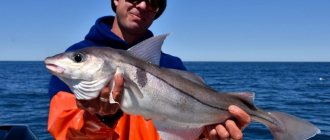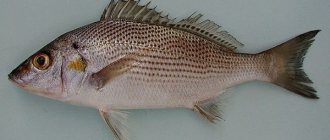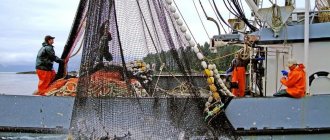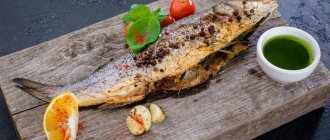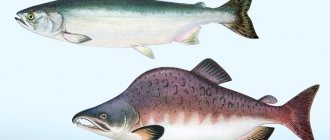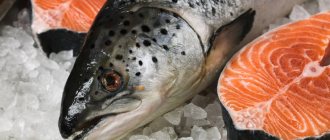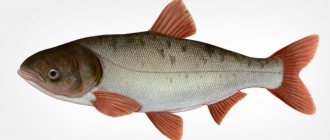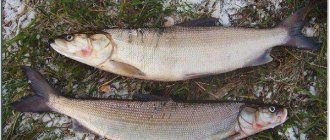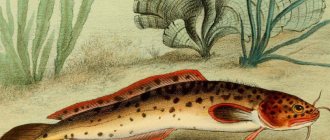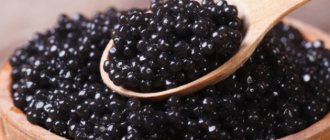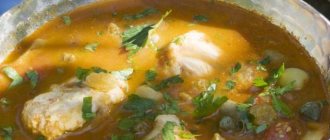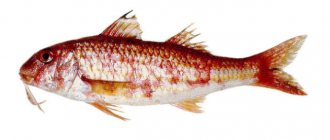What is kunja? Fish from the Salmon family. Fishermen catch it in many seas: Japan, Okhotsk and Bering. Kunji fishing is mainly carried out by Japan and Russia. In the first of these countries, most of it is caught for consumption in their domestic markets, as well as for trade in East Asian countries. This fish is not bred on special farms. Like most salmon fish, it needs both sea and fresh water. And this cannot be achieved on any breeding farm.
Description
Kunja is a fairly large fish. It can reach a length of up to one meter and weigh up to eleven kilograms. This fish cannot be confused with any other: it has a dark back, a silver belly and a brown body with light spots. Lives up to ten years.
The meat of this fish resembles the taste of trout. It is tender and juicy. Kitchen workers in restaurants respect this type of fish. More and more people like its taste. Fish lovers do not take into account the price of the product, but it is quite noticeable.
What kind of fish is kunja?
This fish is a representative of the salmon family. It is included in the subspecies of “chars”, so named because of its peculiarity - the almost complete absence of scales, due to which the fish looks as if “naked”.
Appearance
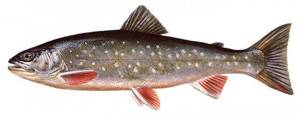
The kunja fish is similar to other representatives of its family, but it also has certain differences that make it impossible to confuse it with other fish. This is a very attractive looking individual with elegant bright colors. Its body is usually amber to brown in color and its fins are bright orange.
There are quite large white spots on the back and sides of the kunja, which is why this type of salmon is also called speckled white (unlike other Arctic char, which have dark and red spots on the body). The elongated body of the kunja is covered with small, barely noticeable scales. Her mouth is slanted and large, with many small teeth.
Weight and size
Kunja is one of the largest representatives of its species. The weight of this fish can reach more than ten kilograms, and the length of the kunja grows up to one meter. However, these are the largest ones. The average weight of caught kunja is two to three kilograms.
Distinctive features
As mentioned above, this fish cannot be confused with the rest of its relatives. The kunja has distinctive white spots, very small scales, bright orange fins, and a silvery belly on its elongated darkish (brown or amber) body.
Habitat
This fish lives in the Seas of Okhotsk, Bering and Japan, and is found in the northwest Pacific Ocean, in the Amur, in the rivers of Kamchatka and some large lakes of Japan. Freshwater specimens are found in the Russian Magadan region. Usually the kunja lives near the shore, without going deep into the sea. Under favorable conditions, kunja in the wild can live for ten years.
How to catch more fish?
Over 13 years of active fishing, I have found many ways to improve the bite. And here are the most effective:
- Bite activator. Attracts fish in cold and warm water with the help of pheromones included in the composition and stimulates its appetite. It’s a pity that Rosprirodnadzor wants to impose a ban on its sale.
- More sensitive gear. Read the relevant manuals for a specific type of gear on the pages of my website.
- Pheromone-based lures.
You can get the rest of the secrets of successful fishing for free by reading my other materials on the site.
Kunja is a predatory fish. Its main diet consists of small fish such as smelt, sand lance, gobies, and minnows. Kunja also feed on large insect larvae and freshwater shrimp.
Reproduction
This fish comes to spawn in rivers, and the spawning process itself takes place mainly in late summer - early autumn. During its life, a kunja can make over ten such migrations.
Fishing for kunja
It is worth noting that kunja is not bred artificially - this fish needs both fresh and sea water, and not every fish farm can do this at the same time.
Fishing for this fish is carried out mainly in Russia and Japan. At the same time, in the latter country, kunja occupies one of the leading positions in consumption. In addition, Japanese fishermen actively catch this fish for subsequent sale in East Asian countries located on the mainland.
In the European part of Russia, this fish is not often found on sale, and therefore it is not cheap. Although, given the taste and beneficial properties of this fish, the price and quality of kunja corresponds.
Kunja (fish): beneficial properties
Nutritionists recommend including it in your diet for all people. Those who are losing weight are also recommended to eat it. Those who are worried about their figure and extra pounds worry in vain, since kunja is a low-calorie fish.
What is the reason for its popularity? Most likely, the fact is that kunja is a fish, the beneficial properties of the meat of which distinguish it from all members of the family.
Everyone knows that it is very important to have a strong immune system. After all, this is the only way to resist a number of dangerous diseases. Just one hundred grams of this fish will replenish the daily requirement of vitamin C, which supports the immune system in the human body. Needless to say, the essential iron, magnesium and niacin found in fish help strengthen hair and nails? A person who eats kunja will provide himself with youthful skin for a long time. After all, it contains B vitamins.
Spawning of kunja
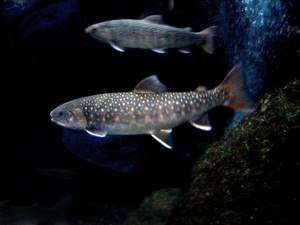
Puberty in the kunja occurs at approximately 3-4 years. During sexual maturity, the color of the kunja changes. It starts to get dark. Females mature several years later than males.
Their spawning also depends on the type of kunja. Migratory fish, ready to reproduce, begin migrating from the sea to rivers for spawning grounds. The predator chooses calm sections of the river, tributaries with icy tundra water, and bays.
The residential form also spawns in tributaries of lakes and streams with extensive beds. The difference between these two types is that the residential form does not have to migrate from the sea to the river every year.
Spawning of kunja begins in August and lasts until September. The main condition for successful spawning: a pebble bottom, from which the kunja makes a kind of nest. During spawning, the fish does not feed. She noticeably loses weight and loses strength, which she will then actively restore. During the spawning period, the female lays up to 2000 eggs. The fish buries the eggs in nests pre-built for this purpose. Fish spawn annually. The fish's caviar is light yellow in color. After spawning, predators remain in the river and begin to actively hunt. The fish needs to replenish the strength lost during spawning, because winter is ahead. Fish overwinter in the river, and then migratory species migrate to the sea. Summer feeding and further spawning will begin. Fish spawn on average for 10-12 years.
The fry will hatch from the eggs after winter. The fry will live in well-warmed shallow water. For their first wintering, fish will choose deeper places. By the time of their first wintering, the fish will reach a length of about 10 cm. They prefer to stay in schools. The fry will live in the river until maturity, and then go to sea to feed. As a rule, anadromous trout spends 3-4 years in the river. The first slope is carried out when the length of the fish reaches 15-20 centimeters. As the juveniles grow, their diet will change. If at a very young age the fry feed on insects, then as they grow up they switch to caviar, other fry and small fish. Residential forms will continue to live in the lake. Small predators in the river will feed on insect larvae and grow actively.
Kunja fish: cooking recipes
How to cook it? Kunja can be baked in the oven. Take fish, one onion, salt, pepper and vegetable oil. First you need to prepare the fish by removing the entrails, fins, tail and head. The color of its meat depends on the time of year when the kunja was caught. Fish caught in spring has white flesh. The autumn one will be pink. This does not in any way affect the taste or nutritional value of the fish.
Cleaned and prepared kunja should be placed on greased foil. Sprinkle onion rings on top, add salt and ground black pepper. The fish, wrapped tightly in foil, should be placed on a baking sheet in a preheated oven. Next, it should be left to bake for forty minutes. When cooked, the color of the meat turns gray. While a golden crust forms on the fish and it is fully cooked, you can prepare a side dish: boil the potatoes with herbs. When serving, add fresh vegetables.
Fish dishes have always occupied a special place in Russian cuisine. Times have changed, but the habits remain the same. The fishing of fish living in rivers and seas has become much more diverse. For example, before, few people had heard of a fish with the interesting name kunja. Although you can prepare many delicious dishes from it.

Therefore, the following method will please lovers of salted fish.
You need to cut the fish in the same way as in the previous recipe. The carcass should be rinsed under running cold water. Cut so that you get two halves (cut lengthwise). Prepare a brine solution and place the fish there. It is prepared as follows: add eighty grams of salt and one tablespoon of granulated sugar to one liter of cold water. Place the preparation in the refrigerator for a day. Now it's time to take it out and try what happened. For beautiful slicing, the salted fish is placed in the freezer before cutting.
Life cycle of kunja
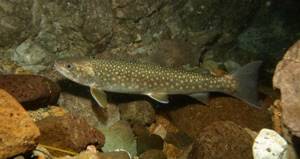
The year-round life cycle of the kunja is repeated from year to year. Residential and migratory fish have different cycles. Residential fish approach the tributary of the lake to spawn. They do not need to migrate long distances.
Migratory representatives of the family make about 10-12 migrations from seas to rivers and back during their entire lives. Having reached the period of sexual maturity, the fish rolls out of the river into the sea, where it begins its pre-spawning feeding. At this time, the fish is actively feeding. By August, the fish begin their spawning run. Throughout September, the brown trout actively lays eggs and buries them in nests. After the end of spawning, the brown trout remains in the river and begins to eat off before wintering. The fish remain in the river for the winter. With the onset of spring, the fish roll into the sea and summer feeding begins again. During this period, the fish likes to stay close to the coast. The fry, emerging from the eggs, remain in the river for 3-4 years, and then also roll into the sea. They begin their life cycle.
{banner_vnutri-kontenta-3}
Fried
By the way, it’s worth talking about fried fish in particular. Let's look at one recipe for this. For fried kunja, in addition to the fish itself, you will need vegetable oil, flour and salt. You need to prepare the fish in the traditional old-fashioned way: clean, rinse, cut into portions. Decorate each with transverse notches on both sides. Add salt and let it soak in the salt.
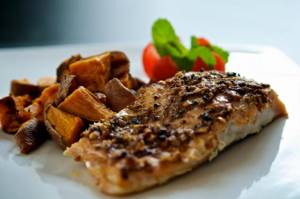
This will take thirty minutes. Now roll well in flour. Heat the oil, put the fish in a frying pan and fry over low heat. The pieces should be fried on both sides until golden brown.
Kunja (fish): how to salt?
We offer you two of the simplest and most delicious ways. Choose according to your taste.
For the first one we will need: half a kilogram of fish, 2 tablespoons of sunflower oil, lemon, salt. Clean the kunja and remove everything unnecessary. Then grease with sunflower oil, sprinkle with lemon and salt. Place in a cool, dark place, preferably overnight.
Second way. Cut the processed fish into two parts along the belly. Rinse well with cold water. It is necessary to make a solution for salting. Take a liter of cold water, eight teaspoons of salt, a tablespoon of sugar. Mix everything thoroughly and add the fish. Now put it in the refrigerator and forget about it until the next day. Exactly one day later, try the fish. You will definitely like it. However, there is still one drawback - there is never enough fish, no matter how much you make.
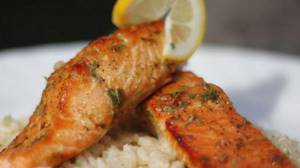
Another dish
The simplest recipe for preparing a smoked fish dish. You will need two onions, which are cut into half rings.
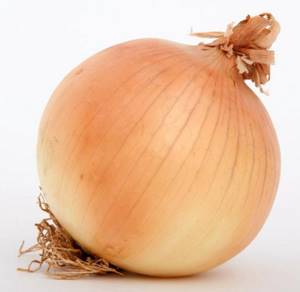
The bones are removed from the fish. The resulting pulp is cut into narrow strips and mixed with chopped onions. Everything is seasoned with vegetable oil and placed in a herring bowl. Then it is served with potatoes and sour cream.
Kunja habitats
Kunja is a real Far Eastern predator. This fish is actively exploring the Asian expanses of the Pacific Ocean. It can be found all the way to the Japanese islands of Hokkaido and Honshu. The main habitats of sea kunja are: the Bering Sea, the Sea of Okhotsk and the Sea of Japan. This representative of salmon is found in the Kuril Islands, Kamchatka, Sakhalin and the Commander Islands. Kunja is not alone. She prefers to stay in small schools and sometimes even gathers in groups. Ideal habitat: coastal areas of the seas with clean and cool water.
A freshwater variety of "speckled white salmon" is found in the Magadan region. There are also fish that live well in small rivers and even streams. Kunja fish is very careful. She hides under snags, in depressions and holes. Kunja prefers to be closer to the shore.
Unusual recipe - kedgeree with kunja
You need to take one can of kunja canned food, a little rice (one glass), one onion, two boiled eggs, vegetable oil, two glasses of water and pepper and salt to taste. Canned fish should be mashed. Afterwards you need to cook the rice. Next, peel and fry the onion, chop the egg whites, and grind the yolks.
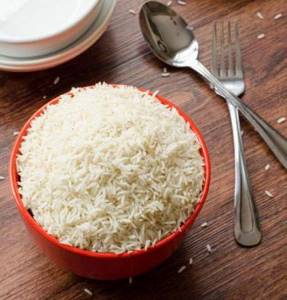
Everything except the last ingredient should be mixed and placed in a salad bowl. Next, decorate the dish with yolks and herbs.
Fishermen's opinion
Fishermen like kunja (fish). Reviews say the following: it has excellent taste, is quite large, and, as you know, not every fisherman is happy with small fish. If you catch it, the fish will have weight. Another fact that captivates them is that this fish is a predator. It feeds on small fish, so it is quite easy to spot. Small fish move in schools - this is a sure sign that kunja will be hunting nearby. In terms of the number of individuals caught, it will be small, but in terms of weight, you can quickly fulfill the plan.
Methods for catching mykiss
Methods for catching mykiss include spinning, float and bottom gear, as well as fly fishing. This is a fairly rare species of fish in our fauna, so fishing for mykiss can be a great moment in the life of any fisherman.
Fishing for mykiss using a spinning rod
For catching mykiss, you can easily find “specialized” rods and baits. The basic principles for choosing tackle are the same as for other trout. On small tributaries, light one-handed spinning rods are used. The choice of rod “structure” is influenced by the fact that bait placement often takes place in the main stream of the river or landing fish can be carried out in a fast current
When choosing a reel, special attention should be paid to the design of the clutch; due to difficult fishing conditions (overgrown banks, creases, meandering river flow), forced fishing is possible. When catching mykiss with spinning tackle and artificial baits, anglers use rotating spoons, spinnerbaits, oscillating spoons, silicone baits, wobblers
An important point is the presence of baits that hold well in the desired layer of water. “Spinners” with a small petal and a heavy core or medium-sized wobblers with a narrow, purlined body and a small “minnow” blade are suitable for this. It is possible to use sinking wobblers or suspenders.
Catching mykiss on a float rod
To fish for mykiss using float rigs, it is preferable to have a light, “fast action” rod. For “running” equipment, high-capacity inertial coils are convenient. Bait, traditional - worm or insects.
Fly fishing for mykiss
When fly fishing for mykiss, the traditional advice is to use class 5-6 gear for one-handed fish. We must not forget that many of the modern fly fishing equipment were invented specifically for this fish. Currently, we can assume that the choice of gear depends rather on the desires of the fisherman than on fishing conditions. When fishing for mykiss in Kamchatka, it is possible to catch trophy specimens, so it is better to use gear of at least class 6. If the body of water allows it, switch rods can be a good alternative to one-handed rods. Various dry and wet flies, nymphs and small streamers are used as bait. The chances of successful fishing largely depend on the condition of the reservoir and the right location.
